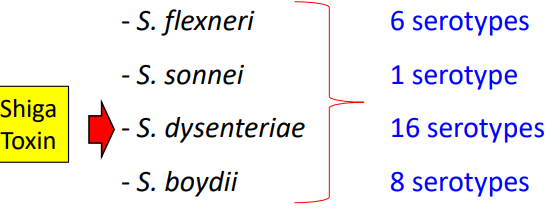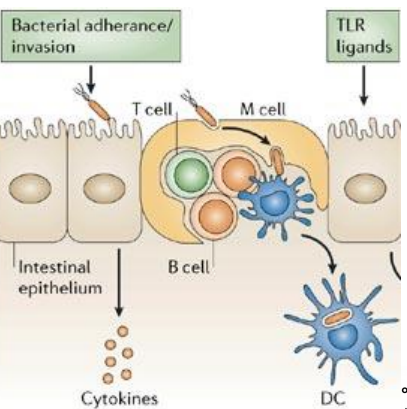Shigella
1/8
There's no tags or description
Looks like no tags are added yet.
Name | Mastery | Learn | Test | Matching | Spaced |
|---|
No study sessions yet.
9 Terms
Transmission
Only found in humans
Directly: Fecal-oral route
Indirectly: Contaminated food and water.
Associated Symptoms
Sudden, severe diarrhea
Nausea, Vomiting, Fever, Colonic Inflammation (Bloody diarrhea)
Some with no symptoms but still carry the infection in their faeces
Population impacted
developing countries
160 million cases a year
60% in young children
Shigellosis-associated complications
- Malnutrition
- Bacteraemia/septicaemia (intestinal perforation)
- Dehydration
- Renal failure
- Haemolytic Uremic Syndrome (HUS)
Causative agent of bacillary dysentery
- Gram-negative, rod-shaped
- Facultative, intracellular pathogen
- Non-motile
- Highly contagious (infectious dose: 1 – 100 bacteria)
Genus Shigella: 4 species

Infection of Invasive Shigella
Invades apical side of epithelial cells at a very low frequency. basolateral invasion much more efficient. how?
It due to shigella gaining access via M-cells (micro-fold cells)

Infection Cont—-
1. Shigella triggers its uptake into M cells - transcytosed.
2. basolateral pocket of M cells: taken up by macrophages
3. survival in macrophages: apoptosis
Re-invade IEC basolaterally

Shigella intracellular Motility
Shigella released from dying macrophages subsequently enter the intestinal epithelium via the basolateral surface